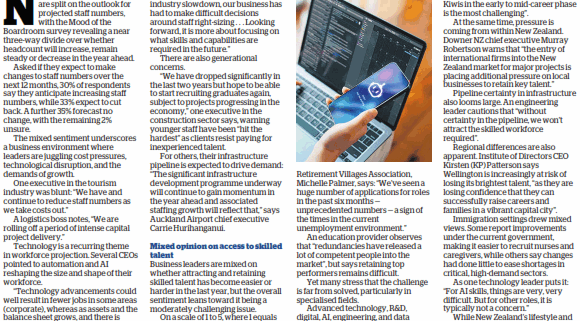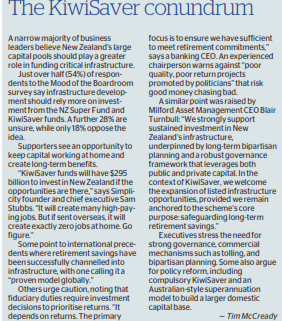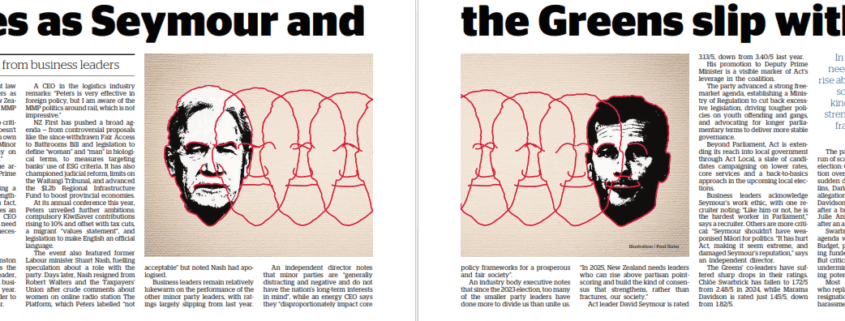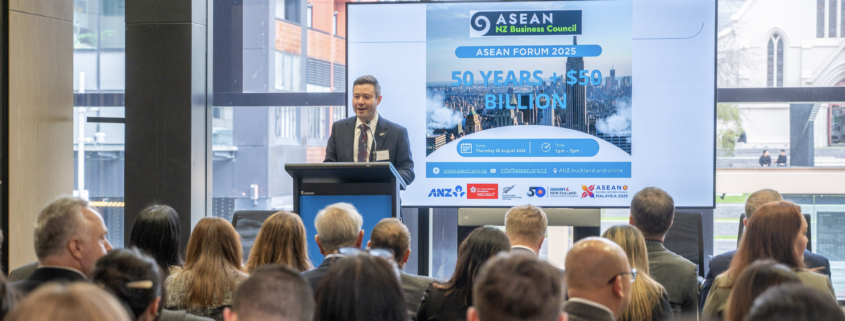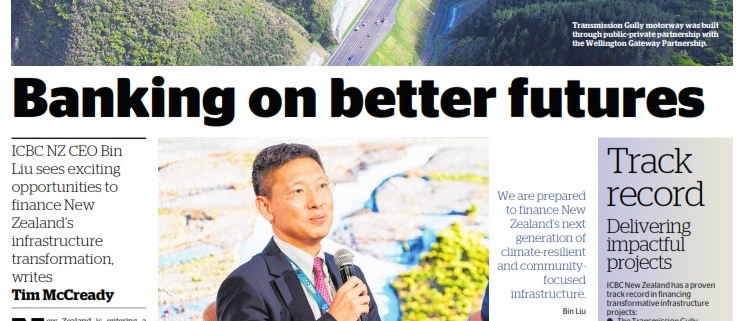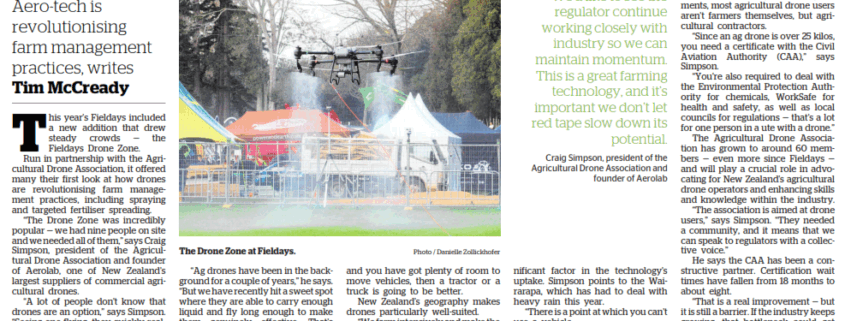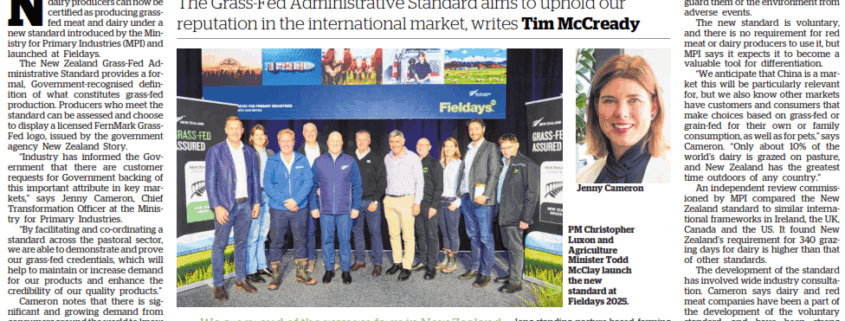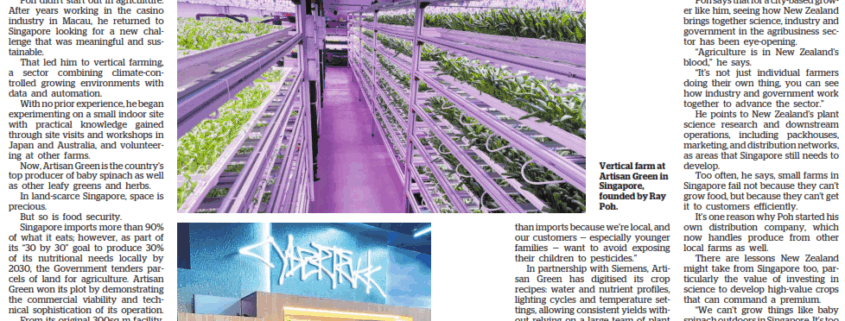Mood of the Boardroom: Peters rises as Seymour and the Greens slip with CEOs (NZ Herald)
Chief executives are moderately positive about the novel shared Deputy Prime Ministership arrangement, born from coalition negotiations between Prime Minister Christopher Luxon, Winston Peters, and David Seymour.
Peters served as deputy for 18 months before handing the title to Seymour on May 31 this year.
The arrangement scored 3.07/5 by respondents to the Mood of the Boardroom, on a scale where 1 means “not impressive” and 5 equals “very impressive”, with many surprised at how smoothly it has functioned, given the potential for friction between three leaders with different political styles and priorities.
“Didn’t predict that!” says one. Another remarks: “For the most part, behaving like responsible adults … it has worked so far.”
Several note the coalition’s cohesion: “They have done very well bringing three diverse leaders together,” while another observes: “Surprisingly cohesive… so far.”
However, not all share this positive view. The head of a prominent law firm labels both deputy leaders as “terrible and destructive for New Zealand”, calling for a rethink of the MMP voting system itself.
An engineering CEO was also critical, saying the arrangement “doesn’t work – too much competing with own agendas and too many egos. Minor parties have too much to say on policy setting in New Zealand.”
Several respondents feel the arrangement has weakened the Prime Minister’s position.
“Playing politics and creating a weird dynamic. This has not strengthened the PM’s position and, in fact, at times undermines him,” notes an infrastructure boss. A logistics CEO says: “The Government did not need the change mid-term. An unnecessary distraction.”
Minor party leaders
New Zealand First leader Winston Peters once again emerges as the most impressive minor party leader, receiving a score of 3.70/5 from business leaders, up from 3.40/5 last year. He is the only minor party leader to increase his score year-on-year.
A CEO in the logistics industry remarks: “Peters is very effective in foreign policy, but I am aware of the MMP politics around rail, which is not impressive.”
NZ First has pushed a broad agenda — from controversial proposals like the since-withdrawn Fair Access to Bathrooms Bill and legislation to define “woman” and “man” in biological terms, to measures targeting banks’ use of ESG criteria. It has also championed judicial reform, limits on the Waitangi Tribunal, and advanced the $1.2b Regional Infrastructure Fund to boost provincial economies.
At its annual conference this year, Peters unveiled further ambitions: compulsory KiwiSaver contributions rising to 10% and offset with tax cuts, a migrant “values statement”, and legislation to make English an official language.
The event also featured former Labour minister Stuart Nash, fuelling speculation about a role with the party. Days later, Nash resigned from Robert Walters and the Taxpayers’ Union after crude comments about women on online radio station The Platform, which Peters labelled “not acceptable” but noted Nash had apologised.
Business leaders remain relatively lukewarm on the performance of the other minor party leaders, with ratings largely slipping from last year.
An independent director notes that minor parties are “generally distracting and negative and do not have the nation’s long-term interests in mind”, while an energy CEO says they “disproportionately impact core policy frameworks for a prosperous and fair society”.
An industry body executive notes that since the 2023 election, too many of the smaller party leaders have done more to divide us than unite us. “In 2025, New Zealand needs leaders who can rise above partisan point-scoring and build the kind of consensus that strengthens, rather than fractures, our society.”
Act leader David Seymour is rated 3.13/5, down from 3.40/5 last year.
His promotion to Deputy Prime Minister is a visible marker of Act’s leverage in the coalition.
The party advanced a strong free-market agenda, establishing a Ministry of Regulation to cut back excessive legislation, driving tougher policies on youth offending and gangs, and advocating for longer parliamentary terms to deliver more stable governance.
Beyond Parliament, Act is extending its reach into local government through Act Local, a slate of candidates campaigning on lower rates, core services and a back-to-basics approach in the upcoming local elections.
Business leaders acknowledge Seymour’s work ethic, with one recruiter noting: “Like him or not, he is the hardest worker in Parliament,” says a recruiter.
Others are more critical: “Seymour shouldn’t have weaponised Māori for politics. “It has hurt Act, making it seem extreme, and damaged Seymour’s reputation,” says an independent director.
The Greens’ co-leaders have suffered sharp drops in their ratings. Chlöe Swarbrick has fallen to 1.72/5 from 2.48/5 in 2024, while Marama Davidson is rated just 1.45/5, down from 1.82/5.
The party has endured a bruising run of scandals and turmoil since the election: Golriz Ghahraman’s resignation over shoplifting allegations, the sudden death of new MP Efeso Collins, Darleen Tana’s expulsion after allegations of migrant exploitation, Davidson stepping back for a period after a breast cancer diagnosis, and Julie Anne Genter being censured after an angry outburst in Parliament.
Swarbrick has sought to reset the agenda with the Greens’ alternative Budget, proposing ambitious spending funded by new taxes and debt. But critics say gaps in the detail risk undermining credibility and alienating potential partners.
Most recently, Benjamin Doyle, who replaced Tana, announced their resignation after months of online harassment.
A real estate CEO laments: “Sadly Swarbrick has gone backwards, and the Greens aren’t the party they used to be.”
Te Pāti Māori’s co-leaders have lost further ground with business, rating just 1.36/5 for Debbie Ngarewa-Packer and 1.39/5 for Rawiri Waititi, down from 1.69/5 last year.
The party celebrated a major win with Oriini Kaipara’s decisive Tāmaki Makaurau by-election victory over Labour’s Peeni Henare earlier this month.
But that momentum has been overshadowed by controversy.
Waititi, Ngarewa-Packer and Hana-Rawhiti Maipi-Clarke received record parliamentary suspensions for refusing to apologise after performing a haka during the Treaty Principles Bill debate — a move deemed “intimidating” by the Privileges Committee.
Internal strains have also emerged. Mariameno Kapa-Kingi was abruptly removed as party whip, while Tākuta Ferris drew cross-party condemnation for comments about non-Māori campaigning for the Labour Party in the by-election.
While the co-leaders are standing their ground, CEOs remain sceptical.
“Debbie and Rawiri — divisive and disrespectful,” says an engineering boss.


